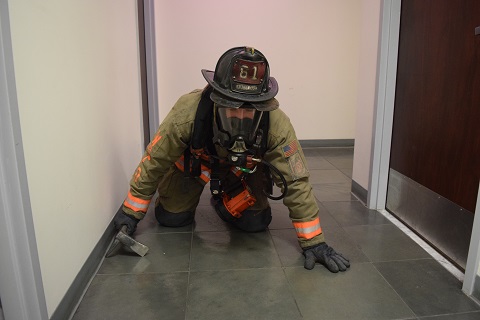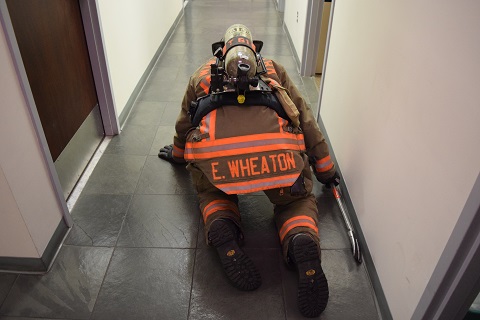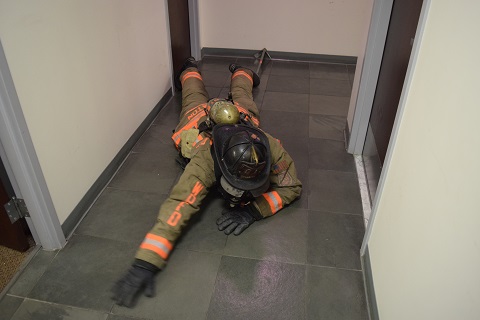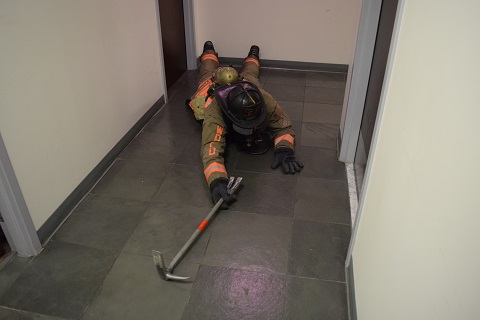By Sidney Dekker
Published Saturday, August 1, 2015 | From the August 2015 Issue of FireRescue
At a founding conference on situation awareness in the mid-1990s, safety veteran Charles Billings wondered aloud whether the use of "situation awareness" was necessary to explain what causes people to see, or miss, or remember seeing something. "It's a construct!" he said in his keynote address. "Constructs cannot cause anything!"
Billings passed away in 2010, and by then the loss of situation awareness (i.e., loss of a construct) had become the favored cause for human performance-related mishaps.
Human Error
Why is it a bad idea to use "loss of situation awareness" when trying to explain human performance difficulties? In short, it is simply a new way of saying human error. Using the explanation of loss of situation awareness to evaluate or explain behavior can have consequences, including the following:
- It says that you now know more than other people. It is not an explanation at all. Instead, it puts you in the position of retrospective outsider judging people for what they did not see but what you now think they should have seen (things that you know because you know the outcome—because of hindsight).
- It is based on 17th-century ideas about the workings of consciousness, when people believed that the mind is a mirror of the world. Developments in cognitive science have long since overtaken this idea. We know there is no such thing as a mental vacuum. So if you lose situation awareness, then what replaces it? Sawdust?
- Because of the seemingly scientific ring to it (as opposed to "human error"), it is now being used by others (media, the judiciary, regulators, employers) to condemn firefighters for their role in incidents. Don't make their case against a colleague of yours easier by judging them in advance for losing something you can only know in hindsight.
Let's look at these three reasons for not using "loss of situation awareness" in more detail.
Hindsight
Hindsight easily slips into our judgment of human performance, even under more modern labels. "Loss of situation awareness" is no more than the difference between what you know now and what other people knew back then. And then you call it their loss.
What this really shows, however, is your ignorance about the situation other people faced. You are not making an effort to go into the tunnel and understand why it made sense for them to look at what they were looking at. That you now know what was important means little, and it explains nothing. In fact, it really interferes with your understanding of why it made sense for people to do what they did.
17th-Century Thinking
"Loss of situation awareness" is actually based on 17th-century ideas about the workings of consciousness. What philosophers and scientists at the time believed was that the mind was like a mirror of the world outside. Knowledge of the world is based on correspondence. What is in the mind, or in awareness, needs to correspond to the world. If it doesn't correspond, then that knowledge is imperfect. And the human mind needs to do more work to make the correspondence perfect.
Such 17th-century ideas have made it possible for today's investigators to claim that they did know what was in the world, and then they can show that the firefighters in question did not. This is a very arrogant position to take, of course. And a meaningless one. You basically say to a firefighter after the fact that you now know the real state of the world (that is, your correspondence was perfect) but that he evidently did not. Situation awareness is a judgment you make. And if that is not perfect, then you call it their "loss of situation awareness."
The biggest problem in this is that you get to decide what is accurate situation awareness. But what is that? The indications from a developing fire that you now know were important? But you only know that with knowledge of outcome, in hindsight. If the firefighters inside of the situation had known the outcome, they too would have considered those indications important. And they would have acted on it, just like you would have. The point is that they did not know the outcome. If they had, they would have done things differently. Your job is not to point out (by whatever labels) that you are now smarter than firefighters were. Your job, if you are an investigator, is to understand what made sense to them at the time (without knowing the outcome!) and to explain it to others.
Developments in cognitive and other sciences have shown the correspondence idea of knowledge to be unsustainable. Here is the really short version: No person in the world is so privileged as to have access to a reality against which all other people's understanding can be proven wrong or inaccurate or somehow "lost." The way each individual looks at the world is determined by where that individual stands. The same is true for all us:
- Everybody's perspective is unique, determined by the position from which you take it.
- No two people can be in the exact same position at the same time, so no two perspectives can ever be the same.
- Nobody's perspective on the world can be reduced to someone else's.
- Everybody's perspective is subjective.
- Nobody has an objective perspective, against which other people's subjective perspectives can be compared.
As an investigator, in hindsight and with knowledge of outcome, you might believe that you have something that other people lost. Sure. But your view is subjective and unique (just like those of the people whose performance you are examining) and just as constrained (though by other things) as the next person's. Anything else would assume that you can somehow take a view from nowhere—an objective view that is entirely free from any influencing background, knowledge, or position in the world. There is no such viewpoint. You have to stand somewhere! You have to view things from somewhere. So you might as well try to see them from the point of view of the people whose actions you are trying to understand.
Firefighter Condemnation
Charles Billings' remarks that situation awareness is a construct and that constructs don't cause anything must have gone unheard—or unheeded. "Loss of situation awareness" now "causes" plenty of incidents and accidents in firefighting. This is no longer just a supposed explanatory use of "loss of situation awareness." Situation awareness, in these cases, represents a duty of care, the professional commitment expected of firefighters whose actions can influence the lives of others. When investigators, bosses, prosecutors, or regulators demonstrate a "loss of situation awareness" (which is very easy), it represents an absence of a duty of care, a breach of the relationship of trust with patients, passengers, and colleagues; it represents a failure to live up to a professional commitment; it represents a possibly prosecutable crime.
This takes situation awareness beyond the wildest dreams of those who introduced it to the human factors lexicon. Other people can always show that there was more in the world than there was in the mind, because in hindsight anybody can show that. And they can then call that difference the firefighter's "loss of situation awareness." Just imagine the following exchange that may show up in the legal aftermath of a fire incident:
Counsel: Wouldn't you agree that accurate situation awareness by firefighters like yourself is integral for providing optimal performance during the fighting of a fire? This is what many investigations in your field claim. See, here it says so [counsel points to exhibit].
Firefighter: I'd have to agree.
Counsel: Would you say that your performance in this case, in which the structure collapsed and two of your colleagues tragically died as a result of your decisions, was optimal?
Firefighter: We all hoped for a different outcome.
Counsel: Were you or were you not aware of the situation that this particular beam, X, when weakened given the total temperature reached in that region of the fire, in combination with structural aspects of the building Y and Z, produced problems of structural integrity given the nature of the steel used at the time this building was put up?
Firefighter: I was not aware of that, ah… no.
Counsel: Yet you agreed that accurate situation awareness is integral for providing optimal performance during the fighting of a fire?
Firefighter: [silence].
Counsel: No further questions.
I would like to see those who use the construct help defend the firefighter who is accused (implicitly or explicitly) of losing situation awareness. I don't know whether they, or anybody, can. The most fundamental problem is that situation awareness locks you into that hopelessly old-fashioned 17th-century thinking where there is a world and a mind and the mind is merely the (imperfect) mirror of the world. If we urge people to be less complacent, to try a little harder, then that mirror can become a little less imperfect.
The inverse is true too. If people turn out to have an imperfect mental mirror of the world (a "loss of situation awareness"), we know that because the outcome of their actions was bad—and in hindsight we can easily point to the exact few critical elements that were missing from their mental picture. We, or others, can then blame their deficient motivation (their complacency, their violation of the duty of care, their breach of the professional relationship) for this imperfection. They should have tried harder not to lose situation awareness! It means nothing other than that we judge people for not knowing what we now know.
Standard Behavior
"Loss of situation awareness," like any characterization of human error, raises the difficult question of a norm or standard. What is the norm or standard relative to which the behavior is erroneous? What is the awareness norm we put up relative to which someone else's awareness was "lost"? We can only define situation awareness in relation to some target world, or norm, that the firefighter should have been aware of. But we cannot use hindsight knowledge of the total situation as that norm, because the firefighters in question did not have that knowledge. Sure, you can compare your hindsight knowledge of the situation with firefighters' knowledge at the time. Of course you are going to know more, or at least different things, about what turned out to be critical. But that is not a useful norm. It just makes you both arrogant and ignorant—arrogant because you think you know better (and because of hindsight and outcome knowledge, you indeed just might, but that doesn't mean anything) and ignorant because you haven't done anything to understand people's unfolding perspective inside the situation in which they found themselves.
If you want to contribute to a meaningful investigation of an incident and help prevent the next one from happening, please don't say what people should have seen or done. Don't say they lost some "construct." Instead, try to understand why it made sense for them to do what they did, given the circumstances they found themselves in. Because if it made sense to them, and your organization doesn't change anything about those circumstances, it will likely make sense to their colleagues (and you) next time around.
This article is based on an excerpt from The Field Guide to Understanding Human Error by Sidney Dekker. Read more at sidneydekker.com.



